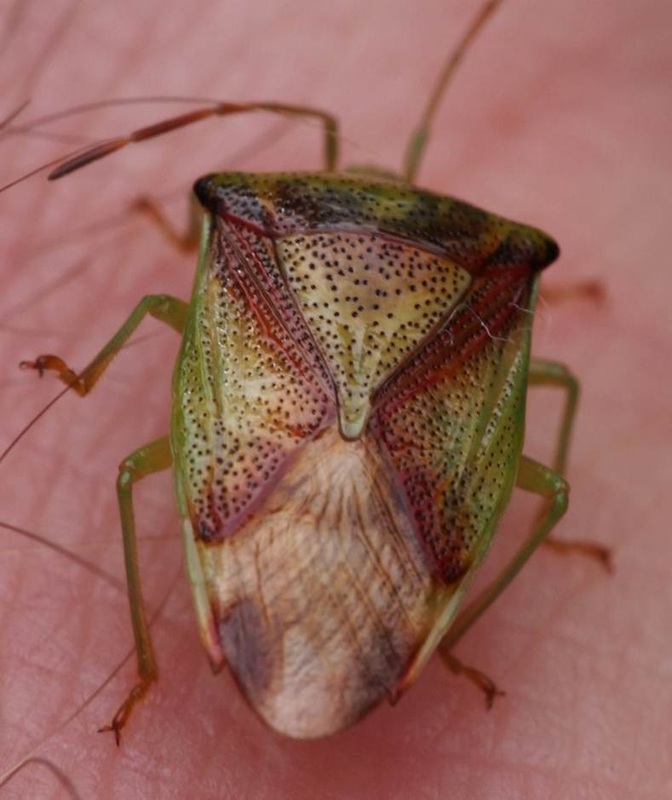Stink bug • Banasa dimidiata (possibly)
{dimidiata = divided in half, referring to the divided colouring of the pronotum}
|
Identification As many insects can be tricky to identify correctly, please note that our identification of this photo comes with a degree of uncertainty. This stink bug is about a centimeter long and has light green and brown or reddish-brown colouring. The front section of the pronotum - the dorsal area behind the head - is green, while the back section is brown. The rest of the dorsal side varies from green to brown. Click here for more photos. Habitat & Range This species is associated with a variety of trees and shrubs, particularly berry plants, from southern Canada to northern Mexico. |
References
Herbert, D.A. et al. Field Guide to Stink Bugs of Agricultural Importance in the United States. Virginia Integrated Pest Management Program. Virginia Cooperative Extension, Virginia Tech and Virginia State University. Accessed 25/11/2014.
Species Banasa dimidiata. BugGuide. Iowa State University Entymology. Accessed 24/11/2014.
Authors and editors of page
Kelly Fretwell and Brian Starzomski.
Herbert, D.A. et al. Field Guide to Stink Bugs of Agricultural Importance in the United States. Virginia Integrated Pest Management Program. Virginia Cooperative Extension, Virginia Tech and Virginia State University. Accessed 25/11/2014.
Species Banasa dimidiata. BugGuide. Iowa State University Entymology. Accessed 24/11/2014.
Authors and editors of page
Kelly Fretwell and Brian Starzomski.




